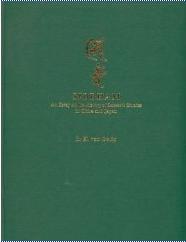
Siddham, An Essay on the History of Sanskrit Studies in China and Japan
The survey presented here, brief though it be, will yet suffice to support the author’s main argument; viz. that while the study of the Sanskrit language never flourished in either China of Japan, the Indian script—in a variety of Brahmi called Siddham—played an important role in Far Eastern Buddhism ever since the introduction of this script into China in the 8 century A.D. The Siddham script owed its popularity in China and Japan especially to the rise of the Mantrayana, the esoteric School of the True Word. It was used in particular for writing Dharani and mantra, and for the magic syllables known as Bijaksara or germ-letters . Since the latter figure largely in the Vajra-dhatu and the Garbha-dhatu, the two magic charts that contain the essence of the teachings of the Mantrayana, these two Mandala are described here in some detail. Although those data are readily available in China and Japan, it is hoped that the description of these two Mandala given in the present study will be of some interest to Buddhologists and archaeologists. The attention of the readers in general is drawn to the calligraphic development of the Siddham script in China and Japan; this calligraphic aspect of Sanskrit studies in those two countries is described at some length in this essay and illustrated in the Plates of Volume II. Orientalists are generally agreed that there exist only three living scripts in the world of such intrinsic artistic value as to deserve a place in the realm of fine art, and which are indeed considered on a par with painting in those countries where those scripts are in use.